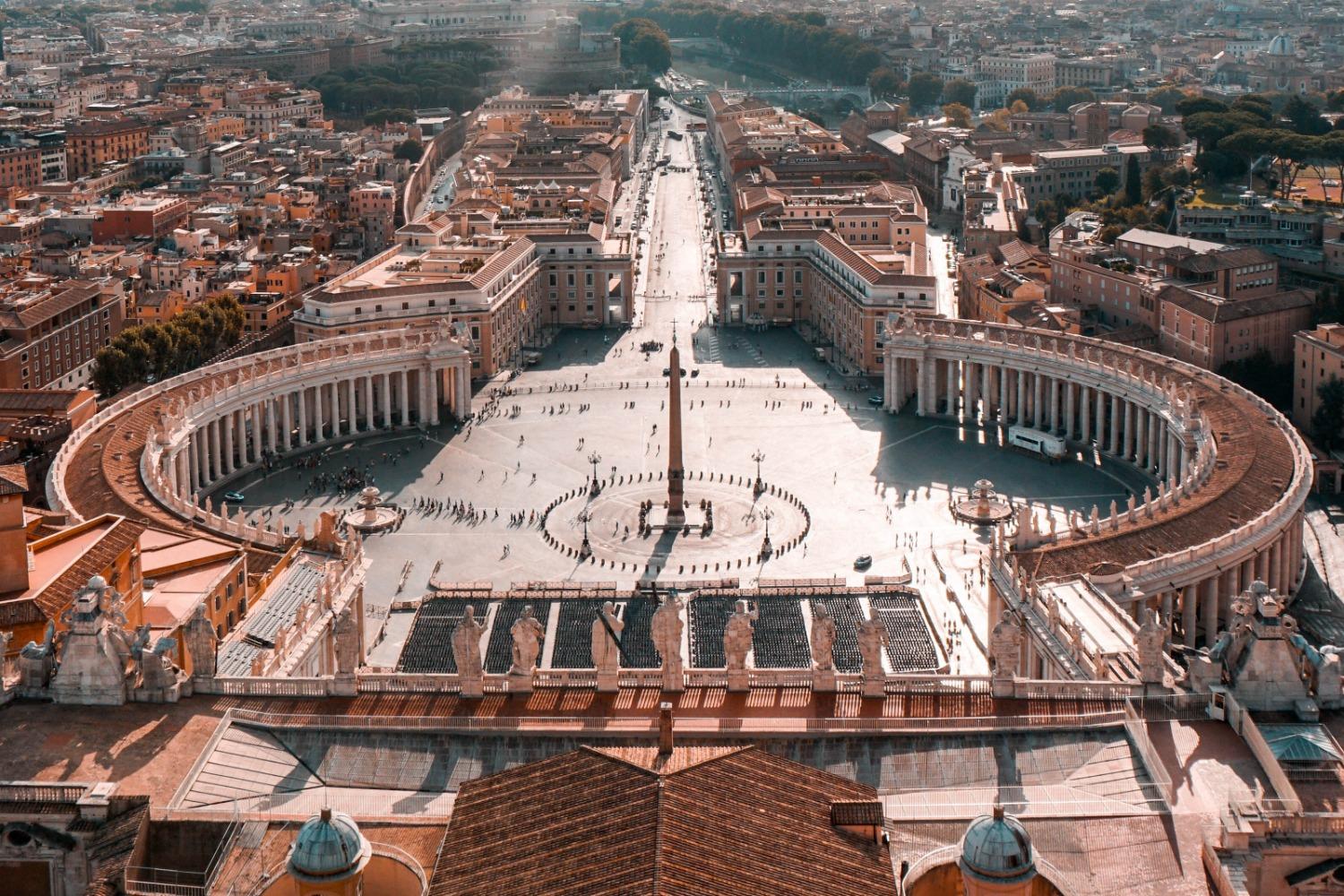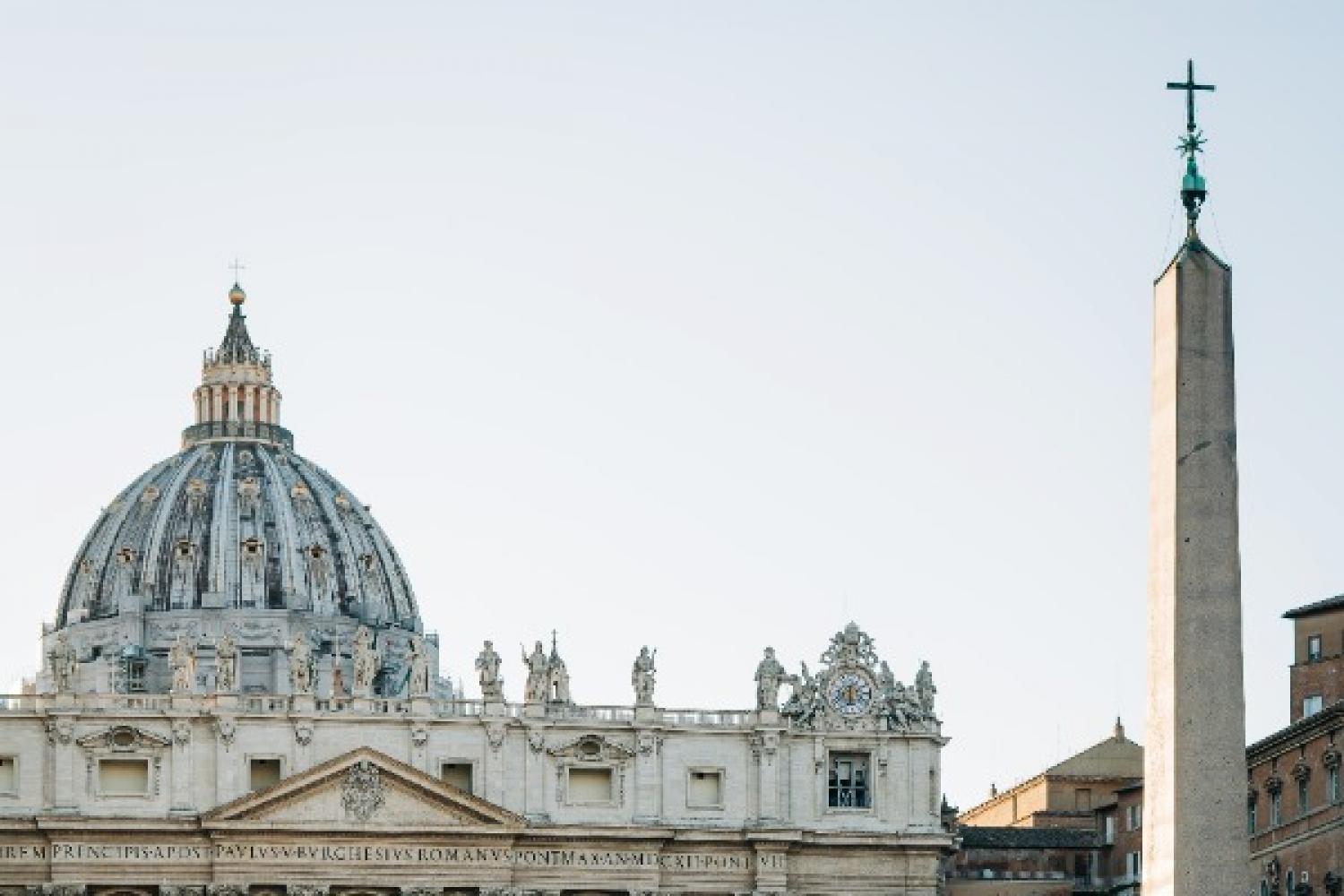
The massive obelisk standing at the center of St. Peter’s Square is likely the last thing St. Peter saw as he died upon the cross.
Believed to be up to 4,000 years old and larger than all the Egyptian obelisks in Rome save for the obelisk found by the Archbasilica of St. John Lateran, the Vatican Obelisk is the only Egyptian obelisk in Rome to have remained standing continuously since ancient Roman times. Originally from Heliopolis, the obelisk was moved to Alexandria, Egypt, by the Romans in the closing decades before Christ. When Emperor Caligula constructed a circus on the Vatican Hill just outside of the city walls, he brought the obelisk from Alexandria and installed it in the spina in the center of the track in AD 37. It was in this circus, most famously known as the Circus of Nero after Emperor Nero personally fought in games there, that St. Peter was crucified. Tradition holds that Peter was crucified upside-down at his own request, recognizing his unworthiness to die like his Lord. Tradition further holds that the Prince of the Apostles was crucified facing the obelisk.
When St. Peter’s Basilica (both the original basilica built by order of Emperor Constantine in the fourth century and the modern basilica begun in the sixteenth century under Pope Julius II) was constructed over the bones of Peter, the obelisk was left in its original location, just south of the basilica.
The current basilica was begun in 1506 under Pope Julius II and completed in 1615. Well into this century-long building period, the obelisk was moved to its current position in front of the basilica by order of Pope Sixtus V. The obelisk, 83 feet tall and weighing 330 tons (or 660,000 pounds), took more than four months to move. Nearly 1,000 men, aided by horses and an elaborate series of winches, were required to complete the task.
On the day of the obelisk’s final placement, Pope Sixtus V ordered that all present remain absolutely silent on threat of grave punishment. When the ropes appeared to be failing, a sailor broke the silence to yell “water on the ropes!” placing himself in danger to save the obelisk. In gratitude for the sailor's urgent intervention that saved the obelisk from falling, the pope offered the man’s hometown of Bordighera (a coastal town in northwest Italy) exclusive and perpetual rights to provide palms for the Vatican’s Palm Sunday celebrations.
The Vatican Obelisk has stood in its current position since before St. Peter's Square was begun. In fact, the architect Bernini oversaw the design and construction of the Square nearly 70 years later, from 1657-1667. He used the obelisk as a focal point for the Square, reminding Christians of the reality of the life and martyrdom of our first pope and the providential endurance of the Church through the rise and fall of empires and ages.

The First Draught
To receive the Weekly Update in your inbox every week, along with our weekly Lectio Brevis providing insights into upcoming Mass readings, subscribe to The First Draught.
